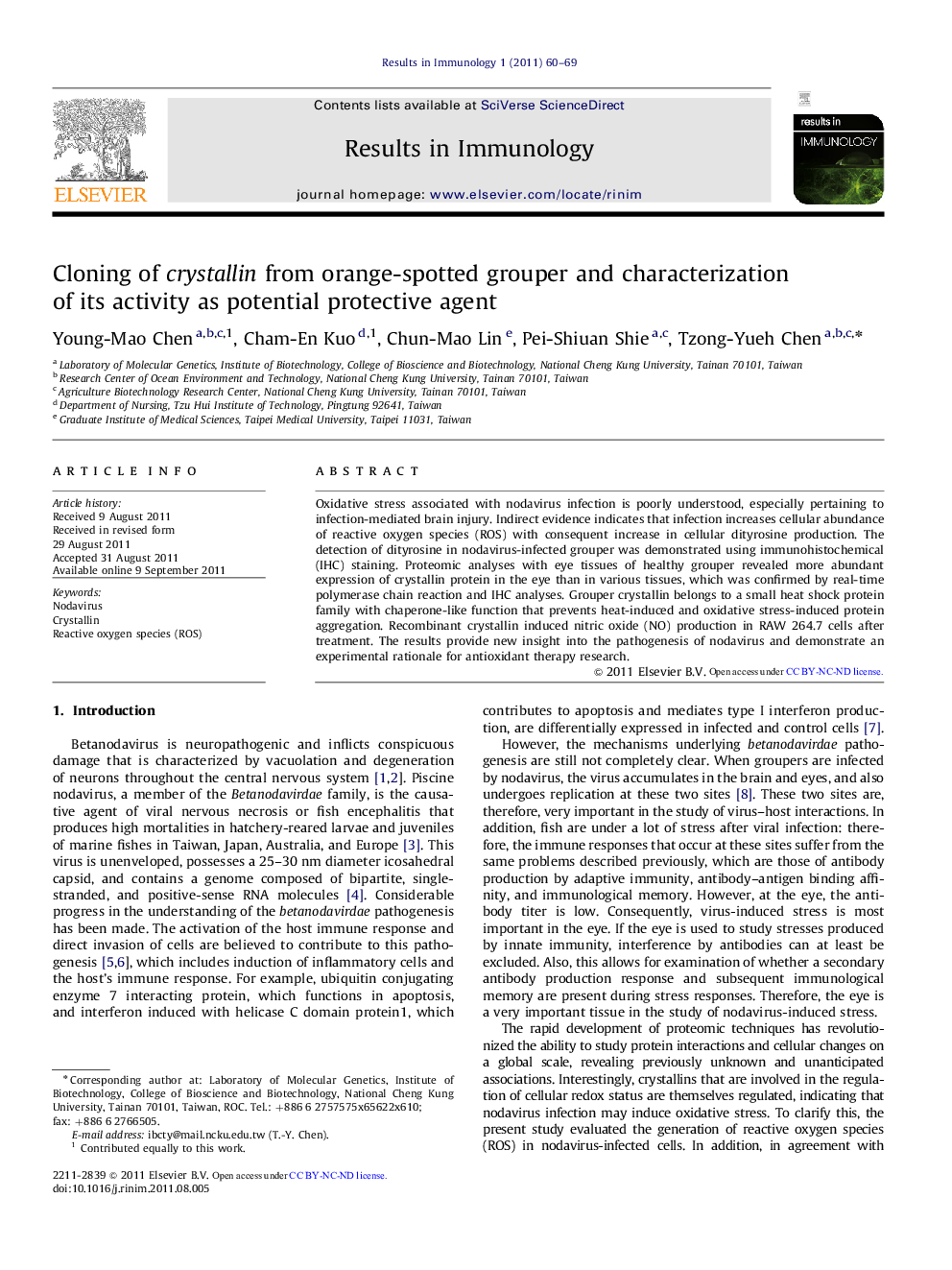| Article ID | Journal | Published Year | Pages | File Type |
|---|---|---|---|---|
| 2202410 | Results in Immunology | 2011 | 10 Pages |
Oxidative stress associated with nodavirus infection is poorly understood, especially pertaining to infection-mediated brain injury. Indirect evidence indicates that infection increases cellular abundance of reactive oxygen species (ROS) with consequent increase in cellular dityrosine production. The detection of dityrosine in nodavirus-infected grouper was demonstrated using immunohistochemical (IHC) staining. Proteomic analyses with eye tissues of healthy grouper revealed more abundant expression of crystallin protein in the eye than in various tissues, which was confirmed by real-time polymerase chain reaction and IHC analyses. Grouper crystallin belongs to a small heat shock protein family with chaperone-like function that prevents heat-induced and oxidative stress-induced protein aggregation. Recombinant crystallin induced nitric oxide (NO) production in RAW 264.7 cells after treatment. The results provide new insight into the pathogenesis of nodavirus and demonstrate an experimental rationale for antioxidant therapy research.
► Dityrosine demonstrated production in nodavirus-infected grouper. ► Crystallin was cloned from orange-spotted grouper. ► Grouper crystallin has chaperone-like function to prevent protein aggregation. ► Recombinant crystallin induced NO production in RAW 264.7 cells.
